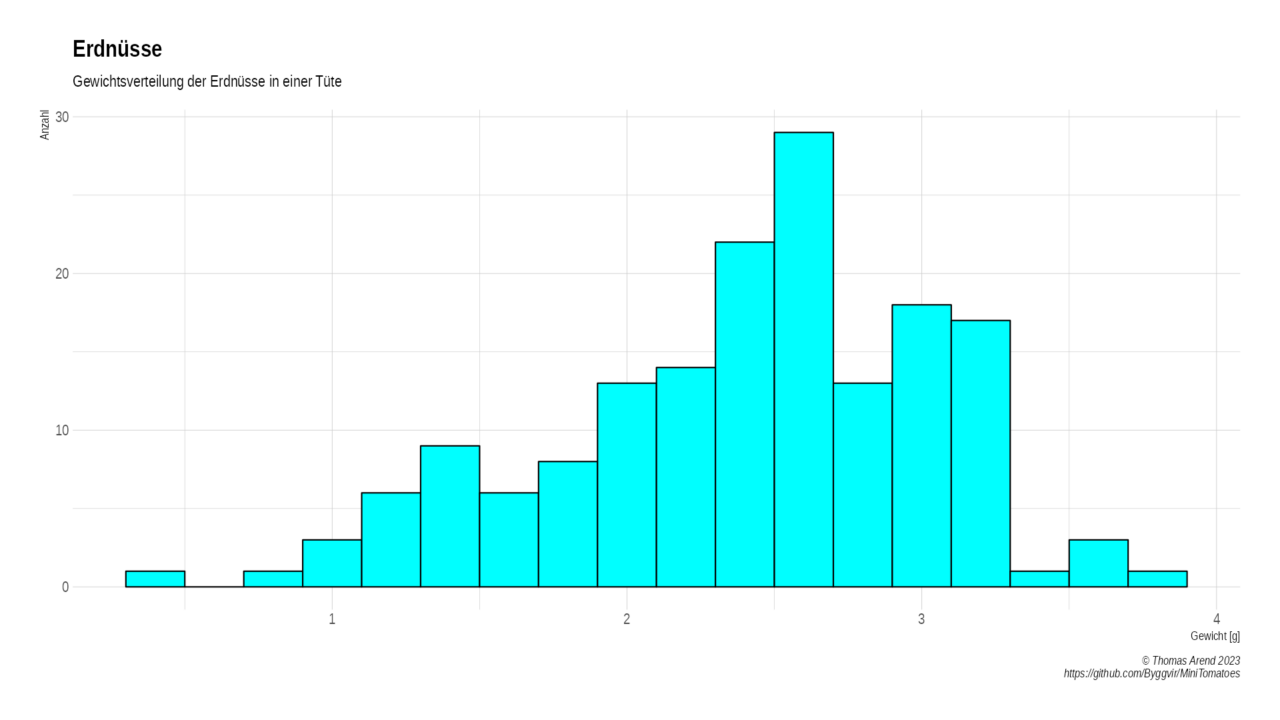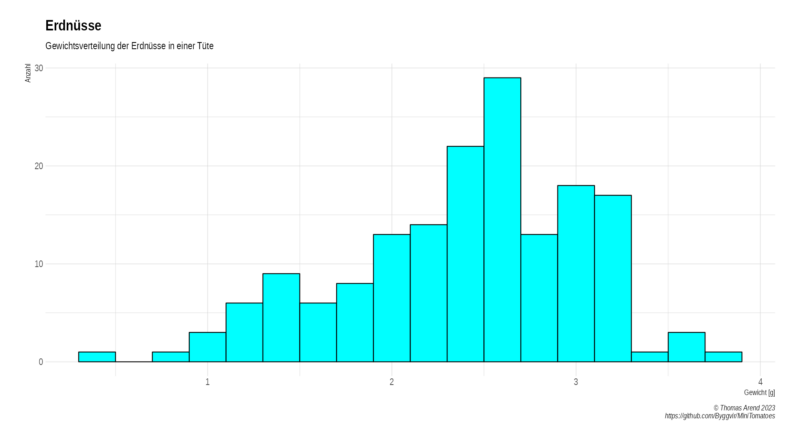A short article about the weight of peanuts written with the help of chatGPT.
The weight of peanuts is an important factor in many applications, ranging from food production to industrial use. In order to better understand the weight of peanuts, it is useful to examine a sample of the nuts and calculate various statistics, such as the mean, median, and standard deviation.
Recently, a sample of 170 peanuts was weighed, with 5 peanuts being broken and not weighed. The following data was collected:
Number of peanuts: N = 165 peanuts
Mean weight: X = 2.3986 grams
Median weight: 2.5000 grams
Standard deviation: s = 0.6314 grams
The following histogram visualizes the distribution of weights in the sample:

The mean, median, and standard deviation provide valuable information about the weight of peanuts. The mean weight can be used as a reference for determining the weight of peanuts in other samples or for other purposes. The median weight is useful for identifying the middle value in the sample, which is often more representative of the typical weight of peanuts than the mean. The standard deviation indicates the degree of variability in the weight of peanuts in the sample, which can be useful for quality control and other applications.
In conclusion, examining the weight of peanuts is a valuable exercise that provides useful information about the nuts. The mean, median, and standard deviation are important metrics that can be used to better understand the weight of peanuts and make informed decisions in a variety of applications. The histogram provides a visual representation of the distribution of weights, which can be helpful for identifying patterns and trends in the data.


Neueste Kommentare